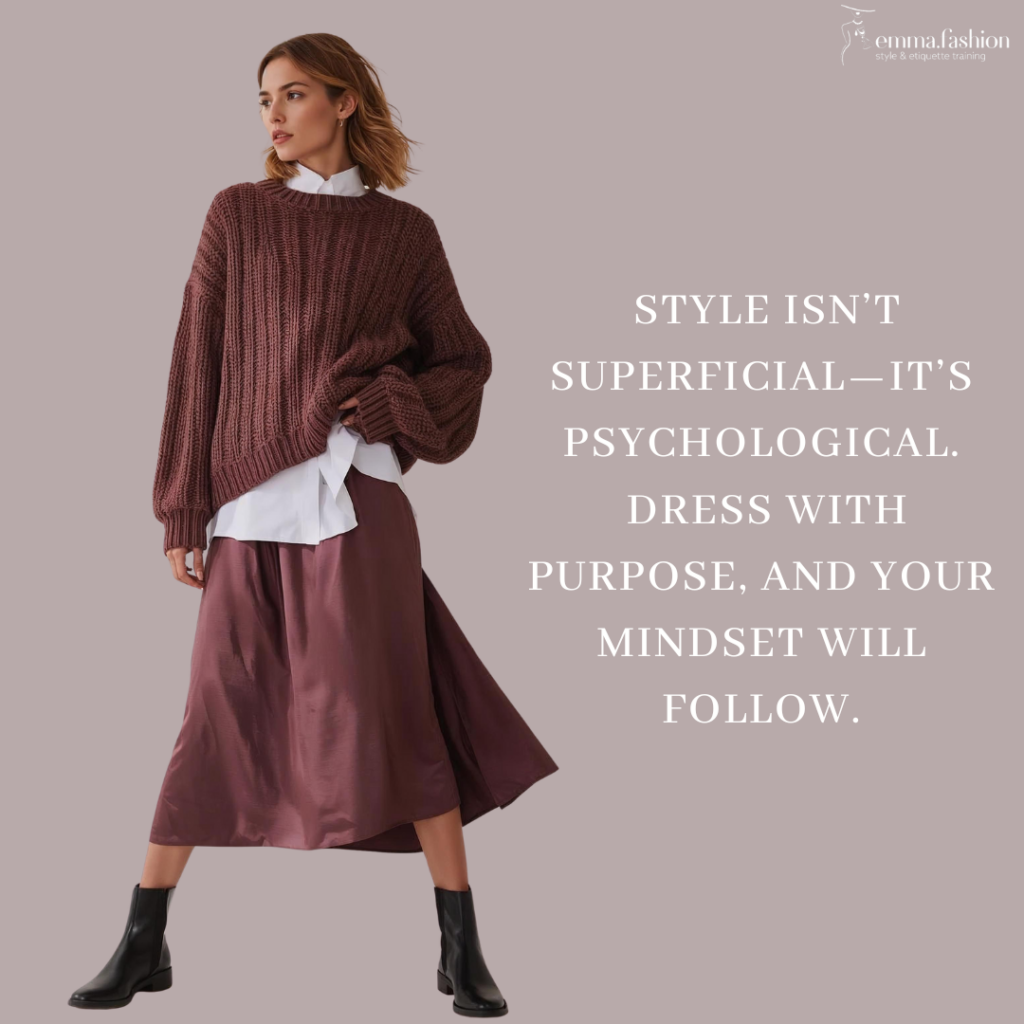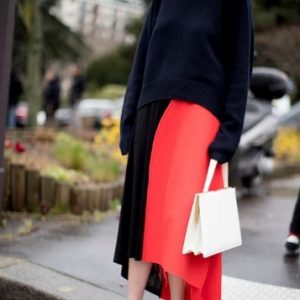Mindset In Motion: The Style Effect
What you wear isn’t just about appearance—it’s about how you feel in what you wear. Clothing carries psychological power; it shapes not only how others perceive you but how you perceive yourself. The connection between style and confidence runs deeper than fabric and fit—it’s about self-image, identity, and emotional alignment.
The Psychology Behind Dressing
Psychologists call it “enclothed cognition”—the idea that what you wear influences your mindset and behavior. The right outfit can trigger mental associations that shift how you think and perform. A well-fitted blazer can make you feel more authoritative; a crisp white shirt can evoke clarity; and a structured dress can help you carry yourself with composure.
In essence, your wardrobe doesn’t just cover your body—it conditions your mind.
How Style Shapes Self-Perception
When you dress with purpose, you create alignment between your outer presentation and inner identity. This alignment boosts self-assurance and clarity. On the other hand, neglecting your appearance or wearing clothes that don’t reflect your personality can create subtle dissonance—making you feel disconnected or less confident.
Three Ways Style Shapes How You See Yourself
- Posture & Presence: When you wear something that fits well, you naturally stand taller. Good posture reinforces confidence both physically and mentally.
- Mood & Energy: Colors, fabrics, and textures impact emotional tone—soft neutrals calm the mind, while bold hues energize and uplift.
- Identity & Self-Respect: Clothing choices reflect how you value yourself. Choosing quality, fit, and cleanliness signals self-care and integrity.

Using Style as a Confidence Tool
You don’t need an expensive wardrobe to project confidence—you need an intentional one. Confidence grows from consistency: when your style aligns with who you are and what you stand for.
Tips to Leverage Style for Confidence
- Dress for Your Direction: Choose outfits that reflect the person you’re becoming, not just the role you’re in.
- Invest in Fit: Tailoring makes even the simplest pieces feel powerful.
- Simplify Your Palette: Build around a few signature colors that make you feel polished and centered.
- Mind the Details: Clean shoes, pressed fabrics, and minimal accessories communicate care and composure.
- Honor Comfort & Poise: True confidence isn’t in discomfort. Choose clothes that allow natural movement and ease.
Style Etiquette: Confidence Through Awareness
Confidence in style also means awareness—knowing what’s appropriate for the setting while staying authentic to your personality. Elegance never demands attention; it earns it through restraint, harmony, and grace.
- For professional settings, choose structured silhouettes and minimal patterns.
- For social occasions, let personality show through accessories, textures, or color.
- For casual moments, stay relaxed but refined—comfort doesn’t mean careless.
The Mindset Shift
Confidence begins long before you step out the door—it begins in the mirror. Each morning, as you dress, you are making a statement about how you plan to show up in the world. When your wardrobe reflects your self-respect and aspirations, it becomes a silent partner in your success.
Style is not superficial—it’s psychological. Dress with purpose, and your mindset will follow.





Comments